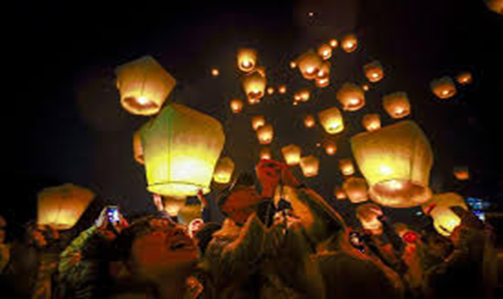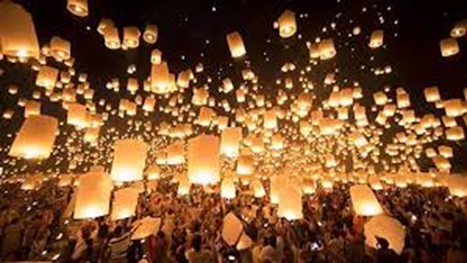The Lantern Festival (Yuan Xiao Jie, or 元宵节) is a vibrant holiday celebrated on the 15th day of the first lunar month, marking the arrival of the first full moon of the year and the official end of the Chinese New Year (Spring Festival) celebrations.
The festival dates back over 2,000 years. Some say it began as a Buddhist tradition of lighting lamps to honor deities. Others say emperors used lanterns to celebrate the full moon and ward off evil spirits.

According to Chinese mythology, The Jade Emperor, ruler of heaven had a favorite magical bird.
One day, the bird accidentally wandered into the human world and was killed by villagers who didn’t know its significance.
The Jade Emperor was furious. He vowed to burn their village to the ground. Hearing of his anger, the villagers panicked… until a wise elder proposed a plan: “On the 15th day, light lanterns everywhere. Make the Emperor think the village is already in flames.”

When the day came, lanterns filled the sky, streets, and riverbanks. From heaven, it looked like the village was glowing in firelight. The Jade Emperor believed his revenge was complete and the people were spared. From then on, lanterns were lit annually to show gratitude, protection, and peace.
Another legend says the Lantern Festival honors the Dragon God of water, responsible for rain and harvest. People lit lanterns to guide him to their villages, hoping he would bless them with a bountiful harvest, gentle rains and protection from floods. Over time, these lanterns became symbols of guidance, hope, and prosperity.

Whether myth or history, dynasties rose and fell, cities modernized, technology evolved. But the Lantern Festival stayed. Because people still crave guidance, connection, and hope. The same things their ancestors wished for thousands of years ago.

Over time, the festival evolved into something global, celebrated not just in China, but across Taiwan, Malaysia, Singapore, and Chinatowns worldwide.
By: Idris Olayinka

